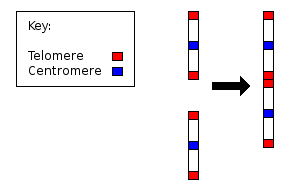Biology:List of organisms by chromosome count
The list of organisms by chromosome count describes ploidy or numbers of chromosomes in the cells of various plants, animals, protists, and other living organisms. This number, along with the visual appearance of the chromosome, is known as the karyotype,[1][2][3] and can be found by looking at the chromosomes through a microscope. Attention is paid to their length, the position of the centromeres, banding pattern, any differences between the sex chromosomes, and any other physical characteristics.[4] The preparation and study of karyotypes is part of cytogenetics.
| S. No. | Organism (Scientific name) |
Chromosome number | Picture | Karyotype | Notes | Source | |||||||
|---|---|---|---|---|---|---|---|---|---|---|---|---|---|
| 1 | Jack jumper ant (Myrmecia pilosula) |
02 2/1 |  |
2 for females, males are haploid and thus have 1; smallest number possible. Other ant species have more chromosomes.[5] | [5] | ||||||||
| 2 | Spider mite (Tetranychidae) |
04 4–14
|
 |
Spider mites (family Tetranychidae) are typically haplodiploid (males are haploid, while females are diploid)[6] | [6] | ||||||||
| 3 | Cricotopus sylvestris | 04 4 | 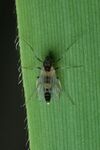 |
[7] | |||||||||
| 4 | Oikopleura dioica | 06 6 |  |
[8] | |||||||||
| 5 | Yellow fever mosquito (Aedes aegypti) |
06 6
|
 |
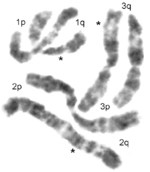
|
The 2n=6 chromosome number is conserved in the entire family Culicidae, except in Chagasia bathana, which has 2n=8.[9] | [9] | |||||||
| 6 | Indian muntjac (Muntiacus muntjak) |
06 6/7
|
 |
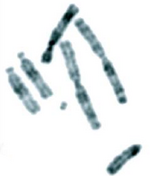
|
2n = 6 for females and 7 for males. The lowest diploid chromosomal number in mammals.[10] | [11] | |||||||
| 7 | Hieracium | 08 8
|
 |
||||||||||
| 8 | Fruit fly (Drosophila melanogaster) |
08 8
|
 |
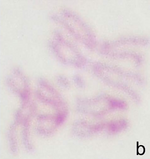
|
6 autosomal and 2 allosomic (sex) | [12] | |||||||
| 9 | Macrostomum lignano | 08 8
|

|
[13] | |||||||||
| 10 | Marchantia polymorpha | 09 9
|
 |

|
Typically haploid with dominant gametophyte stage. 8 autosomes and 1 allosome (sex chromosome). The sex-determination system used by this species and most other bryophytes is called UV. Spores can carry either the U chromosome, which results in female gametophytes, or the V chromosome, which results in males. The chromosome number n = 9 is the basic number in many species of Marchantiales. In some species of Marchantiales, plants with various ploidy levels (having 18 or 27 chromosomes) were reported, but this is rare in nature. | [14] | |||||||
| 11 | Thale cress (Arabidopsis thaliana) |
10 | 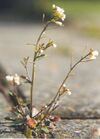 |

|
|||||||||
| 12 | Swamp wallaby (Wallabia bicolor) |
10 10/11
|
 |

|
11 for male, 10 for female | [15] | |||||||
| 13 | Australian daisy (Brachyscome dichromosomatica) |
12 12
|
 |
This species can have more B chromosomes than A chromosomes at times, but 2n=4. | [16] | ||||||||
| 14 | Nematode (Caenorhabditis elegans) |
11 12/11
|
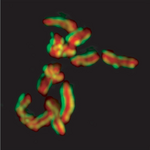
|
12 for hermaphrodites, 11 for males | |||||||||
| 15 | Spinach (Spinacia oleracea) |
12 |  |

|
[17] | ||||||||
| 16 | Broad bean (Vicia faba) |
12 |  |

|
[18] | ||||||||
| 17 | Yellow dung fly (Scathophaga stercoraria) |
12 |  |

|
10 autosomal and 2 allosomic (sex) chromosomes. Males have XY sex chromosomes and females have XX sex chromosomes. The sex chromosomes are the largest chromosomes and constitute 30% of the total length of the diploid set in females and about 25% in males.[19] | [19] | |||||||
| 18 | Slime mold (Dictyostelium discoideum) |
12 | 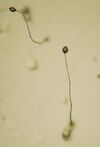 |
[20] | |||||||||
| 19 | Cucumber (Cucumis sativus) |
14 |  |
[21] | |||||||||
| 20 | Tasmanian devil (Sarcophilus harrisii) |
14 |  |

|
|||||||||
| 21 | Rye (Secale cereale) |
14 |  |
[22] | |||||||||
| 22 | Pea (Pisum sativum) |
14 |  |
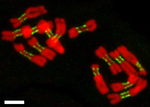
|
[22] | ||||||||
| 23 | Barley (Hordeum vulgare) |
14 | 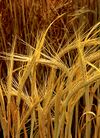 |
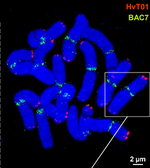
|
[23] | ||||||||
| 24 | Aloe vera | 14 |  |

|
The diploid chromosome number is 2n = 14 with four pair of long acrocentric chromosomes ranging from 14.4 μm to 17.9 μm and three pair of short sub metacentric chromosomes ranging from 4.6 μm to 5.4 μm.[24] | [24] | |||||||
| 25 | Koala (Phascolarctos cinereus) |
16 |  |
||||||||||
| 26 | Kangaroo | 16 |  |
This includes several members of genus Macropus, but not the red kangaroo (M. rufus, 20) | [25] | ||||||||
| 27 | Botryllus schlosseri | 16 16 |  |
[26] | |||||||||
| 28 | Schistosoma mansoni | 16 |  |
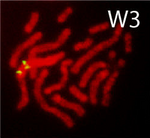
|
2n=16. 7 autosomal pairs and ZW sex-determination pair.[27] | [27] | |||||||
| 29 | Welsh onion (Allium fistulosum) |
16 |  |
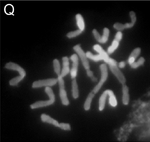
|
[28] | ||||||||
| 30 | Garlic (Allium sativum) |
16 |  |
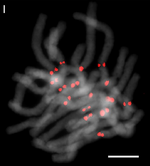
|
[28] | ||||||||
| 31 | Itch mite (Sarcoptes scabiei) |
17 17/18
|
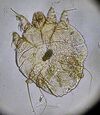 |
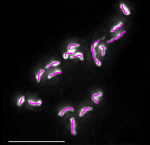
|
According to the observation of embryonic cells of egg, chromosome number of the itch mite is either 17 or 18. While the cause for the disparate numbers is unknown, it may arise because of an XO sex determination mechanism, where males (2n=17) lack the sex chromosome and therefore have one less chromosome than the female (2n=18).[29] | [29] | |||||||
| 32 | Radish (Raphanus sativus) |
18 |  |
[22] | |||||||||
| 33 | Carrot (Daucus carota) |
18 |  |
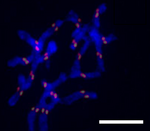
|
The genus Daucus includes around 25 species. D. carota has nine chromosome pairs (2n = 2x = 18). D. capillifolius, D. sahariensis and D. syrticus are the other members of the genus with 2n = 18, whereas D. muricatus (2n = 20) and D. pusillus (2n = 22) have a slightly higher chromosome number. A few polyploid species as for example D. glochidiatus (2n = 4x = 44) and D. montanus (2n = 6x = 66) also exist.[30] | [30] | |||||||
| 34 | Cabbage (Brassica oleracea) |
18 |  |
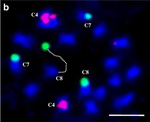
|
Broccoli, cabbage, kale, kohlrabi, brussels sprouts, and cauliflower are all the same species and have the same chromosome number.[22] | [22] | |||||||
| 35 | Citrus (Citrus) |
18 |  |
Chromosome number of the genus Citrus, which including lemons, oranges, grapefruit, pomelo and limes, is 2n = 18.[31] | [32] | ||||||||
| 36 | Passion fruit (Passiflora edulis) |
18 | [33] | ||||||||||
| 37 | Setaria viridis (Setaria viridis) |
18 | 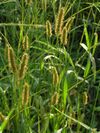 |
[34] | |||||||||
| 38 | Maize (Zea mays) |
20 | 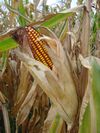 |
[22] | |||||||||
| 39 | Cannabis (Cannabis sativa) |
20 |  |
||||||||||
| 40 | Western clawed frog (Xenopus tropicalis) |
20 |  |

|
[35] | ||||||||
| 41 | Australian pitcher plant (Cephalotus follicularis) |
20 | 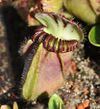 |
[36] | |||||||||
| 42 | Cacao (Theobroma cacao) |
20 | 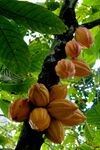 |

|
[37] | ||||||||
| 43 | Eucalyptus (Eucalyptus) |
22 | 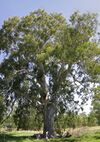 |
Although some contradictory cases have been reported, the large homogeneity of the chromosome number 2n = 22 is now known for 135 (33.5%) distinct species among genus Eucalyptus.[38] | [39] | ||||||||
| 44 | Virginia opossum (Didelphis virginiana) |
22 | 
|
[40] | |||||||||
| 45 | Bean (Phaseolus sp.) |
22 |  |
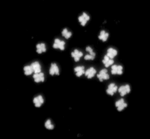
|
All species in the genus Phaseolus have the same chromosome number, including common bean (P. vulgaris), runner bean (P. coccineus), tepary bean (P. acutifolius) and lima bean (P. lunatus).[22] | [22] | |||||||
| 46 | Snail | 24 |  |
||||||||||
| 47 | Melon (Cucumis melo) |
24 |  |
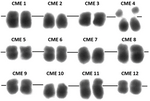
|
[41] | ||||||||
| 48 | Rice (Oryza sativa) |
24 |  |
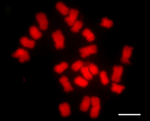
|
[22] | ||||||||
| 49 | Silverleaf nightshade (Solanum elaeagnifolium) |
24 |  |
[42] | |||||||||
| 50 | Sweet chestnut (Castanea sativa) |
24 |  |
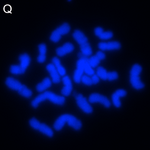
|
[43] | ||||||||
| 51 | Tomato (Solanum lycopersicum) |
24 |  |
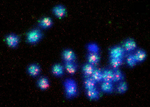
|
[44] | ||||||||
| 52 | European beech (Fagus sylvatica) |
24 |  |
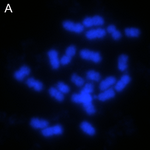
|
[45] | ||||||||
| 53 | Bittersweet nightshade (Solanum dulcamara) |
24 |  |
||||||||||
| 54 | Cork oak (Quercus suber) |
24 |  |
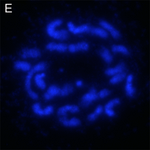
|
[46] | ||||||||
| 55 | Edible frog (Pelophylax kl. esculentus) |
26 |  |
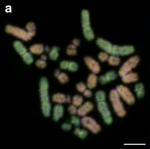
|
Edible frog is the fertile hybrid of the pool frog and the marsh frog.[47] | [48] | |||||||
| 56 | Axolotl (Ambystoma mexicanum) |
28 |  |
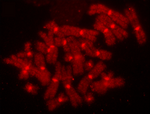
|
[49] | ||||||||
| 57 | Bed bug (Cimex lectularius) |
29 29–47
|
 |
26 autosomes and varying number of the sex chromosomes from three (X1X2Y) to 21 (X1X2Y+18 extra Xs).[50] | [50] | ||||||||
| 58 | Pill millipede (Arthrosphaera magna attems) |
30 |  |
[51] | |||||||||
| 59 | Giraffe (Giraffa camelopardalis) |
30 |  |
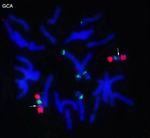
|
[52] | ||||||||
| 60 | American mink (Neogale vison) |
30 |  |
||||||||||
| 61 | Pistachio (Pistacia vera) |
30 | 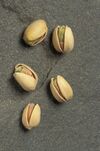 |
[53] | |||||||||
| 62 | Japanese oak silkmoth (Antheraea yamamai) | 31 | 
|

|
[54] | ||||||||
| 63 | Baker's yeast (Saccharomyces cerevisiae) |
32 | 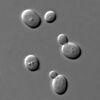 |
||||||||||
| 64 | European honey bee (Apis mellifera) |
32/16 |  |
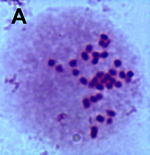
|
32 for females (2n = 32), males are haploid and thus have 16 (1n =16).[55] | [55] | |||||||
| 65 | American badger (Taxidea taxus) |
32 |  |
||||||||||
| 66 | Alfalfa (Medicago sativa) |
32 | 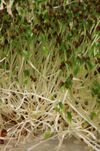 |
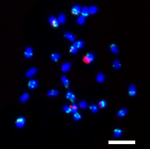
|
Cultivated alfalfa is tetraploid, with 2n=4x=32. Wild relatives have 2n=16.[22]:165 | [22] | |||||||
| 67 | Red fox (Vulpes vulpes) |
34 |  |
Plus 0-8 B chromosomes. | [56] | ||||||||
| 68 | Sunflower (Helianthus annuus) |
34 |  |
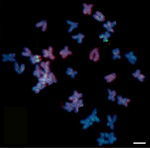
|
[57] | ||||||||
| 69 | Porcupine (Erethizon dorsatum) |
34 | 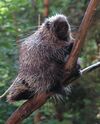 |
[58] | |||||||||
| 70 | Globe artichoke (Cynara cardunculus var. scolymus) |
34 | 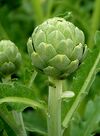 |

|
[59] | ||||||||
| 71 | Yellow mongoose (Cynictis penicillata) |
36 |  |
||||||||||
| 72 | Tibetan sand fox (Vulpes ferrilata) |
36 | 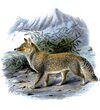 |
||||||||||
| 73 | Starfish (Asteroidea) |
36 |  |
||||||||||
| 74 | Red panda (Ailurus fulgens) |
36 |  |
||||||||||
| 75 | Meerkat (Suricata suricatta) |
36 |  |
||||||||||
| 76 | Cassava (Manihot esculenta) |
36 | 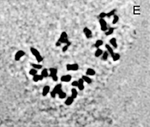
|
[60] | |||||||||
| 77 | Long-nosed cusimanse (Crossarchus obscurus) |
36 |  |
||||||||||
| 78 | Earthworm (Lumbricus terrestris) |
36 | 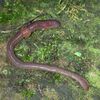 |
||||||||||
| 79 | African clawed frog (Xenopus laevis) |
36 |  |
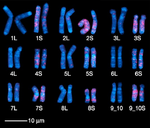
|
[35] | ||||||||
| 80 | Waterwheel plant (Aldrovanda vesiculosa) |
38 | 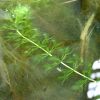 |
[36] | |||||||||
| 81 | Tiger (Panthera tigris) |
38 | 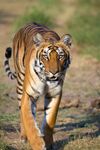 |

|
|||||||||
| 82 | Sea otter (Enhydra lutris) |
38 |  |
||||||||||
| 83 | Sable (Martes zibellina) |
38 | |||||||||||
| 84 | Raccoon (Procyon lotor) |
38 | 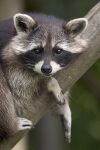 |
[61] | |||||||||
| 85 | Pine marten (Martes martes) |
38 |  |
||||||||||
| 86 | Pig (Sus) |
38 | 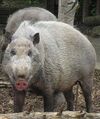 |

|
|||||||||
| 87 | Oriental small-clawed otter (Aonyx cinerea) |
38 |  |
||||||||||
| 88 | Lion (Panthera leo) |
38 |  |
||||||||||
| 89 | Fisher (Pekania pennanti) |
38 |  |
a type of marten | |||||||||
| 90 | European mink (Mustela lutreola) |
38 |  |
||||||||||
| 91 | Coatimundi | 38 |  |
||||||||||
| 92 | Cat (Felis catus) |
38 |  |

|
|||||||||
| 93 | Beech marten (Martes foina) |
38 | 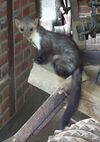 |
||||||||||
| 94 | Baja California rat snake (Bogertophis rosaliae) |
38 |  |
[62] | |||||||||
| 95 | American marten (Martes americana) |
38 | 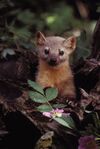 |
||||||||||
| 96 | Trans-Pecos ratsnake (Bogertophis subocularis) |
40 |  |
[63] | |||||||||
| 97 | Mouse (Mus musculus) |
40 |  |
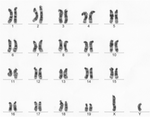
|
[64] | ||||||||
| 98 | Mango (Mangifera indica) |
40 | 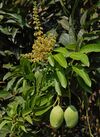 |
[22] | |||||||||
| 99 | Hyena (Hyaenidae) |
40 | 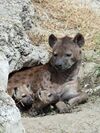 |
||||||||||
| 100 | Ferret (Mustela furo) |
40 |  |
||||||||||
| 101 | European polecat (Mustela putorius) |
40 |  |
||||||||||
| 102 | American beaver (Castor canadensis) |
40 |  |
||||||||||
| 103 | Peanut (Arachis hypogaea) |
40 |  |

|
Cultivated peanut is an allotetraploid (2n = 4x = 40). Its closest relatives are the diploid (2n = 2x = 20).[65] | [65] | |||||||
| 104 | Wolverine (Gulo gulo) |
42 |  |
||||||||||
| 105 | Wheat (Triticum aestivum) |
42 | 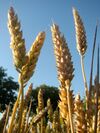 |

|
This is a hexaploid with 2n=6x=42. Durum wheat is Triticum turgidum var. durum, and is a tetraploid with 2n=4x=28.[22] | [22] | |||||||
| 106 | Rhesus monkey (Macaca mulatta) |
42 | 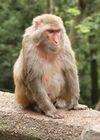 |
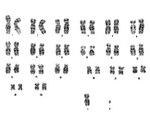
|
[66] | ||||||||
| 107 | Rat (Rattus norvegicus) |
42 | 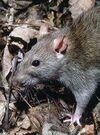 |

|
[67] | ||||||||
| 108 | Oats (Avena sativa) |
42 | 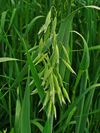 |
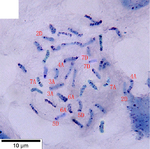
|
This is a hexaploid with 2n=6x=42. Diploid and tetraploid cultivated species also exist.[22] | [22] | |||||||
| 109 | Giant panda (Ailuropoda melanoleuca) |
42 |  |
||||||||||
| 110 | Fossa (Cryptoprocta ferox) |
42 | 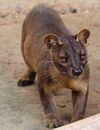 |
||||||||||
| 111 | European rabbit (Oryctolagus cuniculus) |
44 | 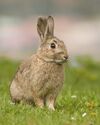 |
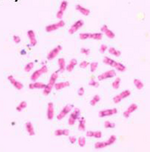
|
|||||||||
| 112 | Eurasian badger (Meles meles) |
44 |  |
||||||||||
| 113 | Moon jellyfish (Aurelia aurita) |
44 |  |
[68] | |||||||||
| 114 | Dolphin (Delphinidae) |
44 |  |
||||||||||
| 115 | Arabian coffee (Coffea arabica) |
44 |  |
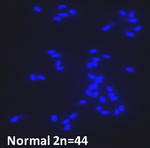
|
Out of the 103 species in the genus Coffea, arabica coffee is the only tetraploid species (2n = 4x = 44), the remaining species being diploid with 2n = 2x = 22.[69] | ||||||||
| 116 | Reeves's muntjac (Muntiacus reevesi) |
46 |  |
||||||||||
| 117 | Human (Homo sapiens) |
46 | 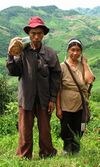 |
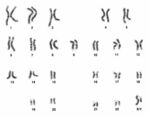
|
44 autosomal. and 2 allosomic (sex) | [70] | |||||||
| 118 | Olive
(Olea Europaea) |
46 | 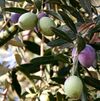
|
||||||||||
| 119 | Nilgai (Boselaphus tragocamelus) |
46 | 
|
[71] | |||||||||
| 120 | Parhyale hawaiensis | 46 |  |

|
[72] | ||||||||
| 121 | Water buffalo (swamp type) (Bubalus bubalis) |
48 |  |
||||||||||
| 122 | Tobacco (Nicotiana tabacum) |
48 | 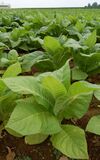 |

|
Cultivated species N. tabacum is an amphidiploid (2n=4x=48) evolved through the interspecific hybridization of the ancestors of N. sylvestris (2n=2x=24, maternal donor) and N. tomentosiformis (2n=2x=24, paternal donor) about 200,000 years ago.[73] | [73] | |||||||
| 123 | Potato (Solanum tuberosum) |
48 |  |
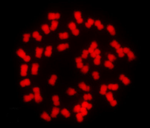
|
This is for common potato Solanum tuberosum (tetraploid, 2n = 4x = 48). Other cultivated potato species may be diploid (2n = 2x = 24), triploid (2n = 3x = 36), tetraploid (2n = 4x = 48), or pentaploid (2n = 5x = 60).[74] Wild relatives mostly have 2n=24.[22] | [74] | |||||||
| 124 | Orangutan (Pongo) |
48 | 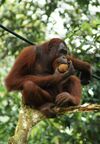 |
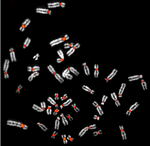
|
|||||||||
| 125 | Hare (Lepus) |
48 |  |
[75][76] | |||||||||
| 126 | Gorilla (Gorilla) |
48 | 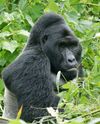 |
||||||||||
| 127 | Deer mouse (Peromyscus maniculatus) |
48 |  |
||||||||||
| 128 | Chimpanzee (Pan troglodytes) |
48 |  |
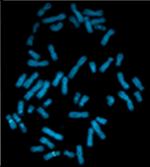
|
[77] | ||||||||
| 129 | Eurasian beaver (Castor fiber) |
48 |  |
||||||||||
| 130 | Zebrafish (Danio rerio) |
50 | 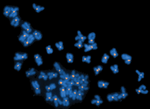
|
[78] | |||||||||
| 131 | Woodland hedgehogs Erinaceus |
48 |  |
[79] | |||||||||
| 132 | African hedgehogs Atelerix |
48 |  |
[80] | |||||||||
| 133 | Water buffalo (Riverine type) (Bubalus bubalis) |
50 |  |
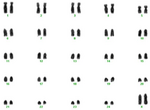
|
|||||||||
| 134 | Striped skunk (Mephitis mephitis) |
50 |  |
||||||||||
| 135 | Pineapple (Ananas comosus) |
50 | 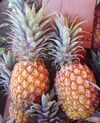 |
[22] | |||||||||
| 136 | Kit fox (Vulpes macrotis) |
50 |  |
||||||||||
| 137 | Spectacled bear (Tremarctos ornatus) |
52 |  |
||||||||||
| 138 | Platypus (Ornithorhynchus anatinus) |
52 |  |
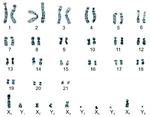
|
Ten sex chromosomes. Males have X1Y1X2Y2X3Y3X4Y4X5Y5, females have X1X1X2X2X3X3X4X4X5X5.[81] | [82] | |||||||
| 139 | Upland cotton (Gossypium hirsutum) |
52 |  |
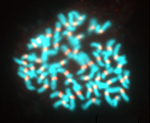
|
This is for the cultivated species G. hirsutum (allotetraploid, 2n=4x=52). This species accounts for 90% of the world cotton production. Among 50 species in the genus Gossypium, 45 are diploid (2n = 2x = 26) and 5 are allotetraploid (2n = 4x = 52).[83] | [83] | |||||||
| 140 | Sheep (Ovis aries) |
54 |  |

|
|||||||||
| 141 | Hyrax (Hyracoidea) |
54 54
|
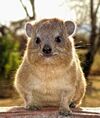 |

|
Hyraxes were considered to be the closest living relatives of elephants,[84] but sirenians have been found to be more closely related to elephants. | [85] | |||||||
| 142 | Raccoon dog (Nyctereutes procyonoides procyonoides) |
54 |  |
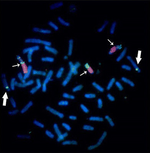
|
This number is for common raccoon dog (N. p. procyonoides), 2n=54+B(0–4). On the other hand, Japanese raccoon dog (N. p. viverrinus) with 2n=38+B(0–8). Here, B represents B chromosome and its variation in the number between individuals.[86][87] | [86] | |||||||
| 143 | Capuchin monkey (Cebinae) |
54 |  |
[88] | |||||||||
| 144 | Silkworm (Bombyx mori) |
56 |  |
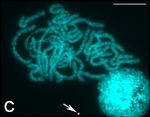
|
This is for the species mulberry silkworm, B. mori (2n=56). Probably more than 99% of the world's commercial silk today come from this species.[89] Other silk producing moths, called non-mulberry silkworms, have various chromosome numbers. (e.g. Samia cynthia with 2n=25–28,[90] Antheraea pernyi with 2n=98.[91]) | ||||||||
| 145 | Strawberry (Fragaria × ananassa) |
56 |  |

|
This number is octoploid, main cultivated species Fragaria × ananassa (2n = 8x = 56). In genus Fragaria, basic chromosome number is seven (x = 7) and multiple levels of ploidy, ranging from diploid (2n = 2x = 14) to decaploid (F. iturupensis, 2n = 10x = 70), are known.[92] | [92] | |||||||
| 146 | Gaur (Bos gaurus) |
56 |  |
||||||||||
| 147 | Elephant (Elephantidae) |
56 | 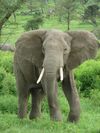 |
||||||||||
| 148 | †Woolly mammoth (Mammuthus primigenius) |
58 |  |
extinct; tissue from a frozen carcass | |||||||||
| 149 | Domestic yak (Bos grunniens) |
60 |  |
||||||||||
| 150 | Goat (Capra hircus) |
60 | 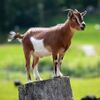 |
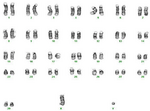
|
|||||||||
| 151 | Cattle (Bos taurus) |
60 |  |
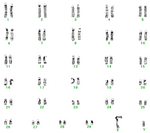
|
|||||||||
| 152 | American bison (Bison bison) |
60 |  |
||||||||||
| 153 | Sable antelope (Hippotragus niger) |
60 |  |
[93] | |||||||||
| 154 | Bengal fox (Vulpes bengalensis) |
60 |  |
||||||||||
| 155 | Gypsy moth (Lymantria dispar dispar) |
62 | 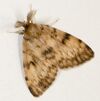 |
||||||||||
| 156 | Donkey (Equus asinus) |
62 |  |
||||||||||
| 157 | Scarlet macaw (Ara macao) |
62–64 |  |

|
[94] | ||||||||
| 158 | Mule | 63 |  |
semi-infertile (odd number of chromosomes – between donkey (62) and horse (64) makes meiosis much more difficult) | |||||||||
| 159 | Guinea pig (Cavia porcellus) |
64 |  |

|
|||||||||
| 160 | Spotted skunk (Spilogale x) |
64 |  |
||||||||||
| 161 | Horse (Equus caballus) |
64 |  |
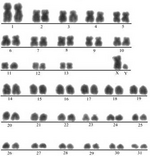
|
|||||||||
| 162 | Fennec fox (Vulpes zerda) |
64 |  |
[95] | |||||||||
| 163 | Echidna (Tachyglossidae) |
63/64 |  |
63 (X1Y1X2Y2X3Y3X4Y4X5, male) and 64 (X1X1X2X2X3X3X4X4X5X5, female)[96] | |||||||||
| 164 | Chinchilla (Chinchilla lanigera) |
64 |  |
[58] | |||||||||
| 165 | Nine-banded armadillo (Dasypus novemcinctus) |
64 |  |

|
[97] | ||||||||
| 166 | Gray fox (Urocyon cinereoargenteus) |
66 |  |
[95] | |||||||||
| 167 | Red deer (Cervus elaphus) |
68 |  |
||||||||||
| 168 | Elk (wapiti) (Cervus canadensis) |
68 |  |
||||||||||
| 169 | Roadside hawk (Rupornis magnirostris) |
68 | 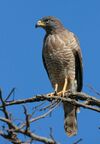 |
[98] | |||||||||
| 170 | White-tailed deer (Odocoileus virginianus) |
70 |  |
||||||||||
| 171 | Black nightshade (Solanum nigrum) |
72 |  |
[99] | |||||||||
| 172 | Tropical blue bamboo (Bambusa chungii) |
64-72 |  |
[100] | |||||||||
| 173 | Bat-eared fox (Otocyon megalotis) |
72 |  |
[95] | |||||||||
| 174 | Sun bear (Helarctos malayanus) |
74 | 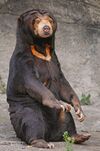 |
||||||||||
| 175 | Sloth bear (Melursus ursinus) |
74 |  |
||||||||||
| 176 | Polar bear (Ursus maritimus) |
74 |  |
||||||||||
| 177 | Brown bear (Ursus arctos) |
74 |  |
||||||||||
| 178 | Asian black bear (Ursus thibetanus) |
74 |  |
||||||||||
| 179 | American black bear (Ursus americanus) |
74 |  |
||||||||||
| 180 | Bush dog (Speothos venaticus) |
74 |  |
||||||||||
| 181 | Maned wolf (Chrysocyon brachyurus) |
76 | 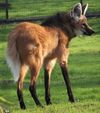 |
||||||||||
| 182 | Gray wolf (Canis lupus) |
78 |  |
||||||||||
| 183 | Golden jackal (Canis aureus) |
78 |  |
[95] | |||||||||
| 184 | Dove (Columbidae) |
78 |  |
Based on African collared dove | [101] | ||||||||
| 185 | Dog (Canis familiaris) |
78 |  |

|
Normal dog karyotype is composed of 38 pairs of acrocentric autosomes and two metacentric sex chromosomes.[102][103] | [104] | |||||||
| 186 | Dingo (Canis familiaris) |
78 |  |
[95] | |||||||||
| 187 | Dhole (Cuon alpinus) |
78 |  |
||||||||||
| 188 | Coyote (Canis latrans) |
78 | 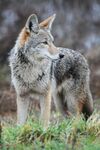 |
[95] | |||||||||
| 189 | Chicken (Gallus gallus domesticus) |
78 | 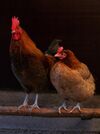 |
||||||||||
| 190 | African wild dog (Lycaon pictus) |
78 |  |
- | 191 | Tropical pitcher plant (Nepenthes rafflesiana) |
78 | 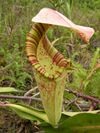 |
[36] | ||||
| 192 | Turkey (Meleagris) |
80 |  |
||||||||||
| 193 | Sugarcane (Saccharum officinarum) |
80 |  |
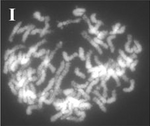
|
This is for S. officinarum (octoploid, 2n = 8× = 80).[105] About 70% of the world's sugar comes from this species.[106] Other species in the genus Saccharum, collectively known as sugarcane, have chromosome numbers in the range 2n=40–128.[107] | [105] | |||||||
| 194 | Pigeon (Columbidae) |
80 |  |
[108] | |||||||||
| 195 | Azure-winged magpie (Cyanopica cyanus) |
80 | 
|
[109] | |||||||||
| 196 | Great white shark (Carcharodon carcharias) |
82 |  |
[110] | |||||||||
| 197 | Bloody geranium (Geranium sanguineum) |
84 | 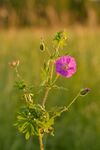 |
[111] | |||||||||
| 198 | Moonworts (Botrychium) |
90 | 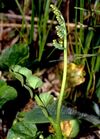 |
||||||||||
| 199 | Grape fern (Sceptridium) |
90 | 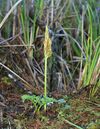 |
||||||||||
| 200 | Pittier's crab-eating rat (Ichthyomys pittieri) |
92 |  |
Previously thought to be the highest number in mammals, tied with Anotomys leander. | [112] | ||||||||
| 201 | Prawn (Penaeus semisulcatus) |
86 86–92
|
 |
[113] | |||||||||
| 202 | Aquatic rat (Anotomys leander) |
92 |  |
Previously thought to be the highest number in mammals, tied with Ichthyomys pittieri. | [112] | ||||||||
| 203 | Kamraj (fern) (Helminthostachys zeylanica) |
94 | 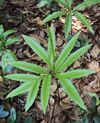 |
||||||||||
| 204 | Crucian carp (Carassius carassius) |
100 |  |

|
[114] | ||||||||
| 205 | Red viscacha rat (Tympanoctomys barrerae) |
102 |  |
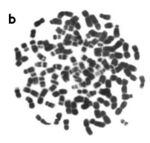
|
Highest number known in mammals, thought to be a tetraploid[115] or allotetraploid.[116] | [117] | |||||||
| 206 | Walking catfish (Clarias batrachus) |
104 |  |

|
[118] | ||||||||
| 207 | American paddlefish (Polyodon spathula) |
120 |  |
[119] | |||||||||
| 208 | Limestone fern (Gymnocarpium robertianum) |
160 | 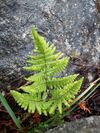 |
Tetraploid (2n = 4x = 160) | [120] | ||||||||
| 209 | African baobab (Adansonia digitata) |
168 |  |
Also known as the "tree of life". 2n = 4x = 168 | [121] | ||||||||
| 210 | Northern lampreys (Petromyzontidae) |
174 |  |
[122] | |||||||||
| 211 | Rattlesnake fern (Botrypus virginianus) |
184 |  |
[123] | |||||||||
| 212 | Red king crab (Paralithodes camtschaticus) |
208 |  |
||||||||||
| 213 | Field horsetail (Equisetum arvense) |
216 |  |
||||||||||
| 214 | Agrodiaetus butterfly (Agrodiaetus shahrami) |
268 |  |
This insect has one of the highest chromosome numbers among all animals. | [124] | ||||||||
| 215 | Black mulberry (Morus nigra) |
308 |  |
Highest ploidy among plants, 22-ploid (2n = 22x = 308)[125] | [126] | ||||||||
| 216 | Atlas blue (Polyommatus atlantica) |
448 448-452
|
 |
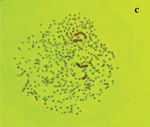
|
2n = c. 448–452. Highest number of chromosomes in the non-polyploid eukaryotic organisms.[127] | [127] | |||||||
| 217 | Adders-tongue (Ophioglossum reticulatum) |
1260 | 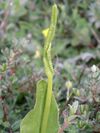 |
n=120–720 with a high degree of polyploidization[128] Ophioglossum reticulatum n=720 in hexaploid species, 2n=1260 in decaploid species [129] | |||||||||
| 218 | Ciliated protozoa (Tetrahymena thermophila) |
10 10 (in micronucleus)
|
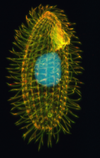 |
50x = 12,500 (in macronucleus, except minichromosomes) 10,000x = 10,000 (macronuclear minichromosomes)[130] |
|||||||||
| 219 | Ciliated protozoa (Sterkiella histriomuscorum) |
16,000[131] |  |
Macronuclear "nanochromosomes"; ampliploid. MAC chromosomes × 1900 ploidy level = 2.964 × 107 chromosomes | [132][133][134] |
- Karyotype of a human being. It shows 22 homologous autosomal chromosome pairs, both the female (XX) and male (XY) versions of the two sex chromosomes, as well as the mitochondrial genome (at bottom left).
Fusion of ancestral chromosomes left distinctive remnants of telomeres, and a vestigial centromere. As other non-human extant hominidae have 48 chromosomes it is believed that the human chromosome 2 is the result of the merging of two chromosomes.[135]
References
- ↑ Concise Oxford Dictionary
- ↑ The chromosomes (6th ed.). London: Chapman & Hall. 1973. p. 28. https://archive.org/details/chromosomes01whit.
- ↑ "Chapter XII: The Karyotype". Variation and evolution in plants. Columbia University Press. 1950.
- ↑ A dictionary of genetics (7th ed.). Oxford University Press. 2006. p. 242.
- ↑ 5.0 5.1 "Myrmecia pilosula, an Ant with Only One Pair of Chromosomes". Science 231 (4743): 1278. March 1986. doi:10.1126/science.231.4743.1278. PMID 17839565. Bibcode: 1986Sci...231.1278C.
- ↑ 6.0 6.1 "Minimal chromosome number in false spider mites (Tenuipalpidae)". Experientia 28 (6): 707. 1972. doi:10.1007/BF01944992.
- ↑ "Cytotaxonomical Diagnostics of Species from the Genus Cricotopus (Chironomidae, Diptera)". Caryologia 29 (3): 291–306. 1976. doi:10.1080/00087114.1976.10796669.
- ↑ "Untersuchungen über die Gehäusebildung bei Appendicularien (Oikopleura dioica Fol)". Zeitschrift für Morphologie und Ökologie der Tiere 41 (1): 1–53. 1952. doi:10.1007/BF00407623.
- ↑ 9.0 9.1 Advances in Genetics, Volume 41 (Advances in Genetics). Boston: Academic Press. 1999. p. 2. ISBN 978-0-12-017641-0.
- ↑ "Rapid and parallel chromosomal number reductions in muntjac deer inferred from mitochondrial DNA phylogeny". Molecular Biology and Evolution 17 (9): 1326–33. September 2000. doi:10.1093/oxfordjournals.molbev.a026416. PMID 10958849.
- ↑ "Indian muntjac, Muntiacus muntjak: a deer with a low diploid chromosome number". Science 168 (3937): 1364–6. June 1970. doi:10.1126/science.168.3937.1364. PMID 5444269. Bibcode: 1970Sci...168.1364W.
- ↑ "Drosophila Genome Project". National Center for Biotechnology Information. https://www.ncbi.nlm.nih.gov/sites/entrez?Db=genomeprj&cmd=ShowDetailView&TermToSearch=9554.
- ↑ "Evidence for Karyotype Polymorphism in the Free-Living Flatworm, Macrostomum lignano, a Model Organism for Evolutionary and Developmental Biology". PLOS ONE 11 (10): e0164915. 2016. doi:10.1371/journal.pone.0164915. PMID 27755577. Bibcode: 2016PLoSO..1164915Z.
- ↑ Shimamura, Masaki (2016). "Marchantia polymorpha: Taxonomy, Phylogeny and Morphology of a Model System". Plant & Cell Physiology 57 (2): 230–256. doi:10.1093/pcp/pcv192. PMID 26657892.
- ↑ "Comparative chromosome painting between two marsupials: origins of an XX/XY1Y2 sex chromosome system". Mammalian Genome 8 (6): 418–22. June 1997. doi:10.1007/s003359900459. PMID 9166586.
- ↑ "Organisation and origin of a B chromosome centromeric sequence from Brachycome dichromosomatica". Chromosoma 103 (10): 708–14. July 1995. doi:10.1007/BF00344232. PMID 7664618.
- ↑ "Evidence for a Common Origin of Homomorphic and Heteromorphic Sex Chromosomes in Distinct Spinacia Species". G3 5 (8): 1663–73. June 2015. doi:10.1534/g3.115.018671. PMID 26048564.
- ↑ "Genotoxicity of silver nanoparticles in Vicia faba: a pilot study on the environmental monitoring of nanoparticles". International Journal of Environmental Research and Public Health 9 (5): 1649–62. May 2012. doi:10.3390/ijerph9051649. PMID 22754463.
- ↑ 19.0 19.1 "The karyotype of the yellow dung fly, Scathophaga stercoraria, a model organism in studies of sexual selection". Journal of Insect Science 10 (118): 1–11. 2010. doi:10.1673/031.010.11801. PMID 20874599.
- ↑ "First of six chromosomes sequenced in Dictyostelium discoideum". Genome News Network. http://www.genomenewsnetwork.org/articles/07_02/dictyostelium.shtml.
- ↑ "Chromosomal structures and repetitive sequences divergence in Cucumis species revealed by comparative cytogenetic mapping". BMC Genomics 16 (1): 730. September 2015. doi:10.1186/s12864-015-1877-6. PMID 26407707.
- ↑ 22.00 22.01 22.02 22.03 22.04 22.05 22.06 22.07 22.08 22.09 22.10 22.11 22.12 22.13 22.14 22.15 22.16 22.17 Simmonds, NW, ed (1976). Evolution of crop plants. New York: Longman. ISBN 978-0-582-44496-6.[page needed]
- ↑ "Chromatin Ring Formation at Plant Centromeres". Frontiers in Plant Science 7: 28. 2016. doi:10.3389/fpls.2016.00028. PMID 26913037.
- ↑ 24.0 24.1 "High frequency microcloning of Aloe vera and their true-to-type conformity by molecular cytogenetic assessment of two years old field growing regenerated plants". Botanical Studies 54 (1): 46. December 2013. doi:10.1186/1999-3110-54-46. PMID 28510900.
- ↑ "G-banded chromosomes and the evolution of macropodidae". Australian Mammalogy 2: 50–63. December 1978. doi:10.1071/AM78007. ISSN 0310-0049. https://books.google.com/books?id=N_ifwszrgFsC&pg=PA53.
- ↑ "Chromosome number within the class Ascidiacea". Marine Biology 26 (1): 63–68. 1974. doi:10.1007/BF00389087.
- ↑ 27.0 27.1 "The genome of the blood fluke Schistosoma mansoni". Nature 460 (7253): 352–8. July 2009. doi:10.1038/nature08160. PMID 19606141. Bibcode: 2009Natur.460..352B.
- ↑ 28.0 28.1 "Chromosome dynamics visualized with an anti-centromeric histone H3 antibody in Allium". PLOS ONE 7 (12): e51315. 2012. doi:10.1371/journal.pone.0051315. PMID 23236469. Bibcode: 2012PLoSO...751315N.
- ↑ 29.0 29.1 "Quantitative PCR-based genome size estimation of the astigmatid mites Sarcoptes scabiei, Psoroptes ovis and Dermatophagoides pteronyssinus". Parasites & Vectors 5: 3. January 2012. doi:10.1186/1756-3305-5-3. PMID 22214472.
- ↑ 30.0 30.1 "Characterization of centromeric histone H3 (CENH3) variants in cultivated and wild carrots (Daucus sp.)". PLOS ONE 9 (6): e98504. 2014. doi:10.1371/journal.pone.0098504. PMID 24887084. Bibcode: 2014PLoSO...998504D.
- ↑ "Chromosome number and secondary constriction variation in 51 accessions of a citrus germplasm bank". Brazilian Journal of Genetics 20 (3): 489–496. 1997. doi:10.1590/S0100-84551997000300021.
- ↑ "Karyological studies in ten species of Citrus(Linnaeus, 1753) (Rutaceae) of North-East India". Comparative Cytogenetics 5 (4): 277–87. 2011. doi:10.3897/CompCytogen.v5i4.1796. PMID 24260635.
- ↑ Souza, Margarete Magalhães, Telma N. Santana Pereira, and Maria Lúcia Carneiro Vieira. "Cytogenetic studies in some species of Passiflora L.(Passifloraceae): a review emphasizing Brazilian species." Brazilian Archives of Biology and Technology 51.2 (2008): 247–258. https://dx.doi.org/10.1590/S1516-89132008000200003
- ↑ "Ribosomal DNA in diploid and polyploid Setaria (Poaceae) species: number and distribution". Comparative Cytogenetics 9 (4): 645–60. 2015. doi:10.3897/CompCytogen.v9i4.5456. PMID 26753080.
- ↑ 35.0 35.1 "A New Nomenclature of Xenopus laevis Chromosomes Based on the Phylogenetic Relationship to Silurana/Xenopus tropicalis". Cytogenetic and Genome Research 145 (3–4): 187–91. April 2015. doi:10.1159/000381292. PMID 25871511. https://opus.bibliothek.uni-wuerzburg.de/frontdoor/index/index/docId/19674.
- ↑ 36.0 36.1 36.2 "Chromosome Numbers of Carnivorous Plants". Bulletin of the Torrey Botanical Club 96 (3): 322–328. May 1969. doi:10.2307/2483737.
- ↑ "Genome size, cytogenetic data and transferability of EST-SSRs markers in wild and cultivated species of the genus Theobroma L. (Byttnerioideae, Malvaceae)". PLOS ONE 12 (2): e0170799. 2017. doi:10.1371/journal.pone.0170799. PMID 28187131. Bibcode: 2017PLoSO..1270799D.
- ↑ "Chromosome numbers of the 59 species of Eucalyptus L'Herit. (Myrtaceae).". Caryologia 59 (3): 207–212. 2006. doi:10.1080/00087114.2006.10797916.
- ↑ "Determination of inter- and intra-species genetic relationships among six Eucalyptus species based on inter-simple sequence repeats (ISSR)". Tree Physiology 25 (10): 1295–302. October 2005. doi:10.1093/treephys/25.10.1295. PMID 16076778.
- ↑ "Chromosomes of American Marsupials". Science 148 (3677): 1602–3. June 1965. doi:10.1126/science.148.3677.1602. PMID 14287602. Bibcode: 1965Sci...148.1602B.
- ↑ "Use of targeted SNP selection for an improved anchoring of the melon (Cucumis melo L.) scaffold genome assembly". BMC Genomics 16 (1): 4. January 2015. doi:10.1186/s12864-014-1196-3. PMID 25612459.
- ↑ "Chromosome number, polyploidy, and growth habit in California weeds". American Journal of Botany 35 (3): 179–86. March 1948. doi:10.2307/2438241. PMID 18909963.
- ↑ "Chromosome numbers of some woody species from the Bulgarian flora". Phytologia Balcanica 13 (2): 205–207. 2007. http://www.bio.bas.bg/~phytolbalcan/PDF/13_2/13_2_09_Ivanova_&_Vladimirov.pdf.
- ↑ "Endogenous pararetroviral sequences in tomato (Solanum lycopersicum) and related species". BMC Plant Biology 7: 24. May 2007. doi:10.1186/1471-2229-7-24. PMID 17517142.
- ↑ "Biological Flora of the British Isles:Fagus sylvatica". Journal of Ecology 100 (6): 1557–1608. 2012. doi:10.1111/j.1365-2745.2012.02017.x.
- ↑ Zaldoš V, Papeš D, Brown SC, Panaus O, Šiljak-Yakovlev S (1998) Genome size and base composition of seven Quercus species: inter- and intra-population variation. Genome, 41: 162–168.
- ↑ "Is premeiotic genome elimination an exclusive mechanism for hemiclonal reproduction in hybrid males of the genus Pelophylax?". BMC Genetics 17 (1): 100. July 2016. doi:10.1186/s12863-016-0408-z. PMID 27368375.
- ↑ "Evidence for integrity of parental genomes in the diploid hybridogenetic water frog Pelophylax esculentus by genomic in situ hybridization". Cytogenetic and Genome Research 134 (3): 206–12. 2011. doi:10.1159/000327716. PMID 21555873.
- ↑ "Initial characterization of the large genome of the salamander Ambystoma mexicanum using shotgun and laser capture chromosome sequencing". Scientific Reports 5: 16413. November 2015. doi:10.1038/srep16413. PMID 26553646. Bibcode: 2015NatSR...516413K.
- ↑ 50.0 50.1 "Comparison of different cytogenetic methods and tissue suitability for the study of chromosomes in Cimex lectularius (Heteroptera, Cimicidae)". Comparative Cytogenetics 10 (4): 731–752. 2016. doi:10.3897/CompCytogen.v10i4.10681. PMID 28123691.
- ↑ "Analysis of male meiosis in seven species of Indian pill-millipede". Caryologia 39 (39): 89–101. 1986. doi:10.1080/00087114.1986.10797770.
- ↑ "Karyotype evolution of giraffes (Giraffa camelopardalis) revealed by cross-species chromosome painting with Chinese muntjac (Muntiacus reevesi) and human (Homo sapiens) paints". Cytogenetic and Genome Research 122 (2): 132–8. 2008. doi:10.1159/000163090. PMID 19096208. https://www.researchgate.net/publication/23677169.
- ↑ "The Molecular Cytogenetic Characterization of Pistachio (Pistacia vera L.) Suggests the Arrest of Recombination in the Largest Heteropycnotic Pair HC1". PLOS ONE 10 (12): e0143861. 2015. doi:10.1371/journal.pone.0143861. PMID 26633808. Bibcode: 2015PLoSO..1043861S.
- ↑ "Genome sequence of the Japanese oak silk moth, Antheraea yamamai: the first draft genome in the family Saturniidae". GigaScience 7 (1): 1–11. January 2018. doi:10.1093/gigascience/gix113. PMID 29186418.
- ↑ 55.0 55.1 "Sex determination in honeybees: two separate mechanisms induce and maintain the female pathway". PLOS Biology 7 (10): e1000222. October 2009. doi:10.1371/journal.pbio.1000222. PMID 19841734.
- ↑ Rubtsov, Nikolai B. (1 April 1998). "The Fox Gene Map". ILAR 39 (2–3): 182–188. doi:10.1093/ilar.39.2-3.182. PMID 11528077.
- ↑ "Toward a molecular cytogenetic map for cultivated sunflower (Helianthus annuus L.) by landed BAC/BIBAC clones". G3 3 (1): 31–40. January 2013. doi:10.1534/g3.112.004846. PMID 23316437.
- ↑ 58.0 58.1 "Metapress – Discover More". 24 June 2016. https://metapress.com/.
- ↑ "First detailed karyo-morphological analysis and molecular cytological study of leafy cardoon and globe artichoke, two multi-use Asteraceae crops". Comparative Cytogenetics 10 (3): 447–463. 2016. doi:10.3897/CompCytogen.v10i3.9469. PMID 27830052.
- ↑ "Comparison of leaf proteomes of cassava (Manihot esculenta Crantz) cultivar NZ199 diploid and autotetraploid genotypes". PLOS ONE 9 (4): e85991. 2014. doi:10.1371/journal.pone.0085991. PMID 24727655. Bibcode: 2014PLoSO...985991A.
- ↑ "Chromosome painting shows that skunks (Mephitidae, Carnivora) have highly rearranged karyotypes". Chromosome Research 16 (8): 1215–31. 2008. doi:10.1007/s10577-008-1270-2. PMID 19051045.
- ↑ "A proposed new genus for Elaphe subocularis and Elaphe rosaliae.". The Snake 20 (1): 52–63. 1988. http://dustyrhoads.x10host.com/Dusty_Rhoads_-_snake_biology/Publications_files/bogertophis_genus_dowling_and_price_1988.pdf.
- ↑ [1]: "Chromosomes of Elaphe subocularis (Reptilia: Serpentes), with the description of an in vivo technique for preparation of snake chromosomes".
- ↑ The Jackson Laboratory : "Mice with chromosomal aberrations".
- ↑ 65.0 65.1 "Taxonomic relationships among Arachis sect. Arachis species as revealed by AFLP markers". Genome 48 (1): 1–11. February 2005. doi:10.1139/g04-089. PMID 15729391.
- ↑ "Effects of calorie restriction on chromosomal stability in rhesus monkeys (Macaca mulatta)". Age 29 (1): 15–28. March 2007. doi:10.1007/s11357-006-9016-6. PMID 19424827.
- ↑ "Rnor_6.0 - Assembly - NCBI". https://www.ncbi.nlm.nih.gov/assembly/GCF_000001895.5.
- ↑ "Chromosome analysis of Linné, 1758 (Scyphozoa: Ulmaridae), southern Gulf of Mexico". Marine Biology Research 5 (4): 399–403. July 2009. doi:10.1080/17451000802534907.
- ↑ "Genetic diversity of arabica coffee (Coffea arabica L.) in Nicaragua as estimated by simple sequence repeat markers". TheScientificWorldJournal 2012: 939820. 2012. doi:10.1100/2012/939820. PMID 22701376.
- ↑ "Human Genome Project". National Center for Biotechnology Information. https://www.ncbi.nlm.nih.gov/sites/entrez?db=genomeprj&cmd=Retrieve&dopt=Overview&list_uids=9558.
- ↑ Gallagher, D. S.; Davis, S. K.; De Donato, M.; Burzlaff, J. D.; Womack, J. E.; Taylor, J. F.; Kumamoto, A. T. (November 1998). "A karyotypic analysis of nilgai, Boselaphus tragocamelus (Artiodactyla: Bovidae)". Chromosome Research 6 (7): 505–513. doi:10.1023/a:1009268917856. ISSN 0967-3849. PMID 9886771. https://pubmed.ncbi.nlm.nih.gov/9886771/.
- ↑ "The genome of the crustacean Parhyale hawaiensis, a model for animal development, regeneration, immunity and lignocellulose digestion". eLife 5. November 2016. doi:10.7554/eLife.20062. PMID 27849518.
- ↑ 73.0 73.1 "The tobacco genome sequence and its comparison with those of tomato and potato". Nature Communications 5: 3833. May 2014. doi:10.1038/ncomms4833. PMID 24807620. Bibcode: 2014NatCo...5.3833S.
- ↑ 74.0 74.1 "Diversity of potato genetic resources". Breeding Science 65 (1): 26–40. March 2015. doi:10.1270/jsbbs.65.26. PMID 25931978.
- ↑ "Chromosome painting refines the history of genome evolution in hares and rabbits (order Lagomorpha)". Cytogenetic and Genome Research 96 (1–4): 223–7. 2002. doi:10.1159/000063034. PMID 12438803.
- ↑ Rabbits, Hares and Pikas. Status Survey and Conservation Action Plan. pp. 61–94. http://wildlife1.wildlifeinformation.org/s/00Ref/BooksContents/b605.htm.
- ↑ "Chromosome number of the chimpanzee, Pan troglodytes". Science 131 (3414): 1672–3. June 1960. doi:10.1126/science.131.3414.1672. PMID 13846659. Bibcode: 1960Sci...131.1672Y.
- ↑ "Zebrafish comparative genomics and the origins of vertebrate chromosomes". Genome Research 10 (12): 1890–902. December 2000. doi:10.1101/gr.164800. PMID 11116085.
- ↑ Anna Grzesiakowska; Przemysław Baran,2; Marta Kuchta-Gładysz; Olga Szeleszczuk1 (2019). "Cytogenetic Karyotype Analysis in Selected Species of the Erinaceidae Family". Journal of Veterinary Research 63 (3): 353–358. doi:10.2478/jvetres-2019-0041. PMID 31572815.
- ↑ Anna Grzesiakowska; Przemysław Baran; Marta Kuchta-Gładysz; Olga Szeleszczuk1 (2019). "Cytogenetic Karyotype Analysis in Selected Species of the Erinaceidae Family". Journal of Veterinary Research 63 (3): 353–358. doi:10.2478/jvetres-2019-0041. PMID 31572815.
- ↑ Atlas of mammalian chromosomes. Hoboken, NJ: Wiley-Liss. 2006. p. 2. ISBN 978-0-471-35015-6. https://books.google.com/books?id=o_RNmnNgEYcC&pg=PA2.
- ↑ "Genome analysis of the platypus reveals unique signatures of evolution". Nature 453 (7192): 175–83. May 2008. doi:10.1038/nature06936. PMID 18464734. Bibcode: 2008Natur.453..175W.
- ↑ 83.0 83.1 "A high-density SSR genetic map constructed from a F2 population of Gossypium hirsutum and Gossypium darwinii". Gene 574 (2): 273–86. December 2015. doi:10.1016/j.gene.2015.08.022. PMID 26275937. https://www.researchgate.net/publication/281005213.
- ↑ "Hyrax: The Little Brother of the Elephant", Wildlife on One, BBC TV.
- ↑ Atlas of Mammalian Chromosomes. John Wiley & sons. 2006. p. 78. ISBN 978-0-471-35015-6.
- ↑ 86.0 86.1 "A chromosome-banding study in the Finnish and the Japanese raccoon dog". Hereditas 105 (1): 97–105. 1986. doi:10.1111/j.1601-5223.1986.tb00647.x. PMID 3793521.
- ↑ Genetics of the Dog. CABI. 1 January 2012. pp. 250–. ISBN 978-1-84593-941-0. https://books.google.com/books?id=R-C3D2QBGsgC&pg=PA250.
- ↑ "Analysis of some normal parameters of the spermiogram of captive capuchin monkeys (Cebus apella Linnaeus, 1758 )". Brazilian Journal of Veterinary Research and Animal Science 39 (6). 2002. doi:10.1590/S1413-95962002000600010. http://www.scielo.br/pdf/bjvras/v39n6/15850.pdf.
- ↑ Peigler, Richard S. ["Wild silks of the world." American Entomologist 39.3 (1993): 151–162. https://doi.org/10.1093/ae/39.3.151
- ↑ "Samia cynthia versus Bombyx mori: comparative gene mapping between a species with a low-number karyotype and the model species of Lepidoptera". Insect Biochemistry and Molecular Biology 41 (6): 370–7. June 2011. doi:10.1016/j.ibmb.2011.02.005. PMID 21396446. https://eprints.lib.hokudai.ac.jp/dspace/bitstream/2115/45607/2/IBMB41-6_370-377.pdf.
- ↑ "Molecular phylogeny of silk-producing insects based on 16S ribosomal RNA and cytochrome oxidase subunit I genes". Journal of Genetics 85 (1): 31–8. April 2006. doi:10.1007/bf02728967. PMID 16809837.
- ↑ 92.0 92.1 "Conservation and loss of ribosomal RNA gene sites in diploid and polyploid Fragaria (Rosaceae)". BMC Plant Biology 11: 157. November 2011. doi:10.1186/1471-2229-11-157. PMID 22074487.
- ↑ Claro, Françoise; Hayes, Hélène; Cribiu, Edmond Paul (November 1993). "The R- and G-Banded Karyotypes of the Sable Antelope (Hippotragus niger)". Journal of Heredity 84 (6): 481–484. doi:10.1093/oxfordjournals.jhered.a111376. PMID 8270772. https://academic.oup.com/jhered/article/84/6/481/811674. Retrieved 6 March 2021.
- ↑ "A multi-platform draft de novo genome assembly and comparative analysis for the Scarlet Macaw (Ara macao)". PLOS ONE 8 (5): e62415. 2013. doi:10.1371/journal.pone.0062415. PMID 23667475. Bibcode: 2013PLoSO...862415S.
- ↑ 95.0 95.1 95.2 95.3 95.4 95.5 95.6 Canids: Foxes, Wolves, Jackals and Dogs: Status Survey and Conservation Action Plan. World Conservation Union. 2004. ISBN 978-2-8317-0786-0.
- ↑ "The multiple sex chromosomes of platypus and echidna are not completely identical and several share homology with the avian Z". Genome Biology 8 (11): R243. 2007. doi:10.1186/gb-2007-8-11-r243. PMID 18021405.
- ↑ "The ancestral eutherian karyotype is present in Xenarthra". PLOS Genetics 2 (7): e109. July 2006. doi:10.1371/journal.pgen.0020109. PMID 16848642.
- ↑ "Chromosome painting in three species of buteoninae: a cytogenetic signature reinforces the monophyly of South American species". PLOS ONE 8 (7): e70071. 2013. doi:10.1371/journal.pone.0070071. PMID 23922908. Bibcode: 2013PLoSO...870071D.
- ↑ "Chromosome Counts in the Varieties of SOLANUM TUBEROSUM and Allied Wild Species". Genetics 12 (1): 84–92. January 1927. doi:10.1093/genetics/12.1.84. PMID 17246516.
- ↑ "Chromosome numbers of some caespitose bamboos native in or introduced to China" (in zh-cn). Journal of Systematics and Evolution 39 (5): 433–442. September 2001. https://www.jse.ac.cn/EN/Y2001/V39/I5/433.
- ↑ "Comparative chromosome painting of chicken autosomal paints 1-9 in nine different bird species". Cytogenetic and Genome Research 103 (1–2): 173–84. 2003. doi:10.1159/000076309. PMID 15004483.
- ↑ "Canis lupus familiaris (dog)". https://www.ncbi.nlm.nih.gov/genome/guide/dog/.
- ↑ "Genomic instability and telomere fusion of canine osteosarcoma cells". PLOS ONE 7 (8): e43355. 2012. doi:10.1371/journal.pone.0043355. PMID 22916246. Bibcode: 2012PLoSO...743355M.
- ↑ "Genome sequence, comparative analysis and haplotype structure of the domestic dog". Nature 438 (7069): 803–19. December 2005. doi:10.1038/nature04338. PMID 16341006. Bibcode: 2005Natur.438..803L.
- ↑ 105.0 105.1 "Microcollinearity between autopolyploid sugarcane and diploid sorghum genomes". BMC Genomics 11: 261. April 2010. doi:10.1186/1471-2164-11-261. PMID 20416060.
- ↑ "Saccharum officinarum L. | Plants of the World Online | Kew Science". http://powo.science.kew.org/taxon/urn:lsid:ipni.org:names:419977-1.
- ↑ Genetics, Genomics and Breeding of Sugarcane. CRC Press. 15 August 2010. p. 70. ISBN 978-1-4398-4860-9. https://books.google.com/books?id=NeVyCQAAQBAJ&pg=PA70.
- ↑ "Chromosomal uniformity in the avian subclass Carinatae". Chromosoma 15 (3): 280–8. August 1964. doi:10.1007/BF00321513. PMID 14196875.
- ↑ Roslik, G.V. and Kryukov A. (2001). A Karyological Study of Some Corvine Birds (Corvidae, Aves). Russian Journal of Genetics 37(7):796-806. DOI: 10.1023/A:1016703127516
- ↑ Gregory, T.R. (2015). Animal Genome Size Database. http://www.genomesize.com/result_species.php?id=1701
- ↑ Akbarzadeh, M.; Van Laere, K.; Leus, L.; De Riek, J.; Van Huylenbroeck, J.; Werbrouck, S. P.; Dhooghe, E. (2021). "Can Knowledge of Genetic Distances, Genome Sizes and Chromosome Numbers Support Breeding Programs in Hardy Geraniums?". Genes 12 (5): 730. doi:10.3390/genes12050730. PMID 34068148.
- ↑ 112.0 112.1 "On the highest chromosome number in mammals". Cytogenetics and Cell Genetics 49 (4): 305–8. 1988. doi:10.1159/000132683. PMID 3073914.
- ↑ "The Chromosome Number of the Persian Gulf Shrimp Penaeus semisulcatus". Iranian Int. J. Sci 5 (1): 13–23. 2004.
- ↑ "Molecular cytogenetic analysis of the crucian carp, Carassius carassius (Linnaeus, 1758) (Teleostei, Cyprinidae), using chromosome staining and fluorescence in situ hybridisation with rDNA probes". Comparative Cytogenetics 8 (3): 233–48. 2014. doi:10.3897/CompCytogen.v8i3.7718. PMID 25349674.
- ↑ "Discovery of tetraploidy in a mammal". Nature 401 (6751): 341. September 1999. doi:10.1038/43815. PMID 10517628. Bibcode: 1999Natur.401..341G.
- ↑ "Molecular cytogenetics and allotetraploidy in the red vizcacha rat, Tympanoctomys barrerae (Rodentia, Octodontidae)". Genomics 88 (2): 214–21. August 2006. doi:10.1016/j.ygeno.2006.02.010. PMID 16580173.
- ↑ "The largest known chromosome number for a mammal, in a South American desert rodent". Experientia 46 (5): 506–8. May 1990. doi:10.1007/BF01954248. PMID 2347403.
- ↑ "Genomic organization of repetitive DNAs highlights chromosomal evolution in the genus Clarias (Clariidae, Siluriformes)". Molecular Cytogenetics 9: 4. 2016. doi:10.1186/s13039-016-0215-2. PMID 26793275.
- ↑ "Molecular cytogenetic differentiation of paralogs of Hox paralogs in duplicated and re-diploidized genome of the North American paddlefish (Polyodon spathula)". BMC Genetics 18 (1): 19. March 2017. doi:10.1186/s12863-017-0484-8. PMID 28253860.
- ↑ "Chromosome numbers of Polish ferns". https://www.researchgate.net/publication/264000883.
- ↑ "New chromosome number and cyto-molecular characterization of the African Baobab (Adansonia digitata L.) - "The Tree of Life"". Scientific Reports 10 (1): 13174. August 2020. doi:10.1038/s41598-020-68697-6. PMID 32764541. Bibcode: 2020NatSR..1013174I.
- ↑ "Family Petromyzontidae – Northern lampreys". http://www.fishbase.org/Summary/FamilySummary.php?Family=Petromyzontidae.
- ↑ Flora of North America Editorial Committee (1993). Flora of North America. Missouri Botanical Garden, St. Louis. http://efloras.org/florataxon.aspx?flora_id=1&taxon_id=233500296.
- ↑ "Reinforcement of pre-zygotic isolation and karyotype evolution in Agrodiaetus butterflies". Nature 436 (7049): 385–9. July 2005. doi:10.1038/nature03704. PMID 16034417. Bibcode: 2005Natur.436..385L.
- ↑ "Morus nigra (black mulberry)" (in en). https://www.cabi.org/isc/datasheet/34830.
- ↑ "Definition of Eight Mulberry Species in the Genus Morus by Internal Transcribed Spacer-Based Phylogeny". PLOS ONE 10 (8): e0135411. 2015. doi:10.1371/journal.pone.0135411. PMID 26266951. Bibcode: 2015PLoSO..1035411Z.
- ↑ 127.0 127.1 "The blue butterfly Polyommatus (Plebicula) atlanticus (Lepidoptera, Lycaenidae) holds the record of the highest number of chromosomes in the non-polyploid eukaryotic organisms". Comparative Cytogenetics 9 (4): 683–90. 2015. doi:10.3897/CompCytogen.v9i4.5760. PMID 26753083.
- ↑ "The blue butterfly Polyommatus (Plebicula) atlanticus (Lepidoptera, Lycaenidae) holds the record of the highest number of chromosomes in the non-polyploid eukaryotic organisms". Comparative Cytogenetics 9 (4): 683–90. 2015-07-10. doi:10.3897/compcytogen.v9i4.5760. PMID 26753083.
- ↑ "Occurrence of Various Cytotypes of Ophioglossum ReticulatumL. In a Population from N. E. India". Caryologia 32 (2): 135–146. 1979. doi:10.1080/00087114.1979.10796781.
- ↑ "DNA rearrangements directed by non-coding RNAs in ciliates". Wiley Interdisciplinary Reviews. RNA 1 (3): 376–87. 2010. doi:10.1002/wrna.34. PMID 21956937.
- ↑ Miller, Greg (17 September 2014). "This Bizarre Organism Builds Itself a New Genome Every Time It Has Sex". Wired. https://www.wired.com/2014/09/oxytricha-encrypted-genome/.
- ↑ "Origin, structure and function of millions of chromosomes present in the macronucleus of unicellular eukaryotic ciliate, Oxytricha trifallax: a model organism for transgenerationally programmed genome rearrangements". Journal of Genetics 94 (2): 171–6. June 2015. doi:10.1007/s12041-015-0504-2. PMID 26174664. http://www.ias.ac.in/describe/article/jgen/094/02/0171-0176.
- ↑ "The Oxytricha trifallax macronuclear genome: a complex eukaryotic genome with 16,000 tiny chromosomes". PLOS Biology 11 (1): e1001473. 2013-01-29. doi:10.1371/journal.pbio.1001473. PMID 23382650.
- ↑ "You Have 46 Chromosomes. This Pond Creature Has 15,600". National Geographic. 6 February 2013. http://phenomena.nationalgeographic.com/2013/02/06/you-have-46-chromsomes-this-pond-creature-has-15600/.
- ↑ "Evidence for an ancestral alphoid domain on the long arm of human chromosome 2". Human Genetics 89 (2): 247–9. May 1992. doi:10.1007/BF00217134. PMID 1587535.
Further reading
- The Masterpiece of Nature: The Evolution and Genetics of Sexuality. Berkeley: University of California Press. 1982. p. 450. ISBN 9780856647536. https://books.google.com/books?id=q5g9AAAAIAAJ&pg=PA450. (table with a compilation of haploid chromosome number of many algae and protozoa, in column "HAP").
- "Host-parasite interactions and the evolution of ploidy". Proceedings of the National Academy of Sciences of the United States of America 101 (30): 11036–9. July 2004. doi:10.1073/pnas.0403151101. PMID 15252199. Bibcode: 2004PNAS..10111036N. Supporting Data Set, with information on ploidy level and number of chromosomes of several protists)
External links
- List of pages in English from Russian bionet site
- The dog through evolution (archived 1 March 2012)
- Shared synteny of human chromosome 17 loci in Canids (archived 24 September 2015)
- An atlas of the chromosome numbers in animals (1951); PDF downloads of each chapter on Internet Archive
 |

